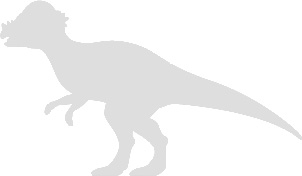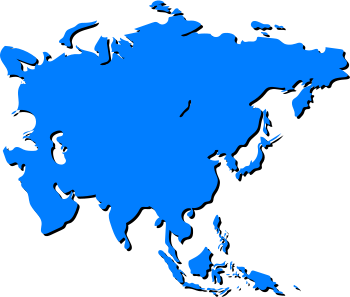Every month, 100,000 readers use the Dinosaur Database, but we receive no support from you. Developing and updating the database requires a lot of work. If you want it to remain open and be updated, please support us via the "Buy us a coffee" button available on every page or via the Support page.
Dinosaur: Zavacephale rinpoche

| Length*: | 100 cm | 3.3 ft |
| Weight*: | 5.85 kg | 13 lb |
*The largest known specimen
Period
Epoch: Early Cretaceous
Stage: Aptian-Albian
Years: 121.4–100.5 Ma
Details
Status: valid
Author: Chinzorig et al.
Year: 2025
Distribution
Area: Asia
Country: Mongolia
Region: Dornogovi
Formation: Khuren Dukh
Description
Zavacephale rinpoche
Zavacephale rinpoche was a small-bodied, early-diverging pachycephalosaurian dinosaur that lived in what is now Mongolia during the Early Cretaceous period, approximately 125–100 million years ago (Aptian–Albian stages). It was discovered in the Khuren Dukh Formation, a sedimentary deposit known for its terrestrial fluvial and lacustrine facies preserving diverse vertebrate fossils.
The name Zavacephale combines “zava,” Mongolian for “origin,” and “cephale,” Greek for “head,” referring to its significance in understanding dome evolution. The species name rinpoche is Tibetan for “precious one,” honoring the Dalai Lama.
As a member of Pachycephalosauria within Ornithischia, Zavacephale represents the oldest definitive pachycephalosaur, providing crucial insights into the clade’s early radiation in Asia.
Etymology
The genus name “Zavacephale” is derived from Mongolian “zava,” meaning “origin,” and Greek “cephale,” meaning “head,” alluding to its role in elucidating the origins of the pachycephalosaurian dome. The species name “rinpoche” is Tibetan for “precious one,” honoring the Dalai Lama.
Physical Characteristics
Zavacephale rinpoche was a diminutive pachycephalosaur, estimated at 1 m (3.3 ft) in length and weighing 5.85 kg (12.9 lb), based on the holotype’s proportions. As a skeletally immature individual, it likely grew larger in adulthood, comparable to other early pachycephalosaurs.
Key anatomical features include:
- A well-developed frontoparietal dome on the skull roof, with limited parietal contribution and a vertex node, but retaining open supratemporal fenestrae.
- Elaborate cranial ornamentation, including hypertrophied skull roof elements typical of the clade.
- First record of manual elements (hand bones) in pachycephalosaurs, showing slender phalanges.
- A complete tail, preserved with caudal vertebrae and chevrons.
- Gastroliths (stomach stones), indicating herbivory with grinding digestion.
- Hindlimb bones with osteohistological evidence of rapid growth and decoupling of sociosexual (dome) and somatic maturity.
These traits highlight a frontal-first dome development pattern, mirroring proposed ontogenetic trajectories in later taxa.
Diet and Feeding Habits
As a herbivorous ornithischian, Zavacephale rinpoche fed on a variety of plants in its fluvial ecosystem. Its diet likely included:
- Ferns and cycads, abundant in Early Cretaceous lowlands.
- Conifers and seed plants, processed with grinding teeth and gastroliths.
- Soft vegetation, cropped at ground level with its small size.
Like other pachycephalosaurs, it used a simple dental battery for shearing, supplemented by gastroliths for mechanical digestion.
Habitat and Distribution
Zavacephale rinpoche lived in what is now central Mongolia, specifically in the Khuren Dukh Formation, a geologic unit with fluvial sandstones and lacustrine mudstones.
Its environment was characterized by:
- Riverine floodplains and lakes, with seasonal flooding.
- Warm, humid climate supporting diverse vegetation.
- Coexisting fauna including turtles, crocodyliforms, and theropods.
The Khuren Dukh Formation yields rare ornithischian remains, making Zavacephale a key find.
Paleoenvironment
The site was a lowland fluvial-lacustrine system during the Aptian–Albian, with braided rivers and ponds fostering a rich ecosystem. The assemblage includes aquatic vertebrates, reflecting a productive habitat for small herbivores like Zavacephale.
Behavior and Social Structure
Zavacephale rinpoche’s dome and ornamentation suggest complex sociosexual behaviors, such as head-butting or display. Possible behaviors include:
- Flank-butting or ramming in dominance contests, inferred from dome structure.
- Herding in small groups for protection, as in other ornithischians.
- Decoupled maturity: advanced dome development before full body size, indicating early sociosexual signaling.
As a bipedal browser, it navigated floodplains, evading predators with agility.
Discovery and Research
The holotype of Zavacephale rinpoche was discovered in the Khuren Dukh Formation, Mongolia. The semi-articulated skeleton (54% complete) was described in 2025, marking the clade’s first hand, gastroliths, and complete tail.
Phylogenetic and osteohistological analyses reveal its basal position and maturity decoupling.
Discovery Context
Unearthed during fieldwork, the immature specimen was preserved in fluvial sediments, dating to ~125–100 million years ago. It pushes back dome evidence by 14 million years, clarifying early evolution.
Significance and Interesting Facts
- Oldest definitive pachycephalosaur, extending the record by 14 million years.
- Most complete skeleton (54% elements), including novel features like hand and gastroliths.
- Reveals frontal-first dome assembly and open supratemporal fenestra in early forms.
- Decoupling of dome (sociosexual) and body maturity, informing behavioral ecology.
- Highlights Asian origins of pachycephalosaurs amid sparse early records.
Conclusion
Zavacephale rinpoche was a small, early pachycephalosaur from the Early Cretaceous of Mongolia, exemplifying the clade’s initial dome evolution and maturity patterns. Its complete skeleton illuminates sociosexual traits’ macroevolution, bridging gaps in ornithischian behavioral studies. This 2025 discovery enhances understanding of pachycephalosaur radiation.
Locations
Sources
Material: Nearly complete skull, manual elements, complete tail, gastroliths, hindlimb bones
References: Chinzorig, Tsogtbaatar; Takasaki, Ryuji; Yoshida, Junki; Tucker, Ryan T.; Buyantegsh, Batsaikhan; Mainbayar, Buuvei; Tsogtbaatar, Khishigjav; Zanno, Lindsay E. (September 17, 2025). "A domed pachycephalosaur from the early Cretaceous of Mongolia"



